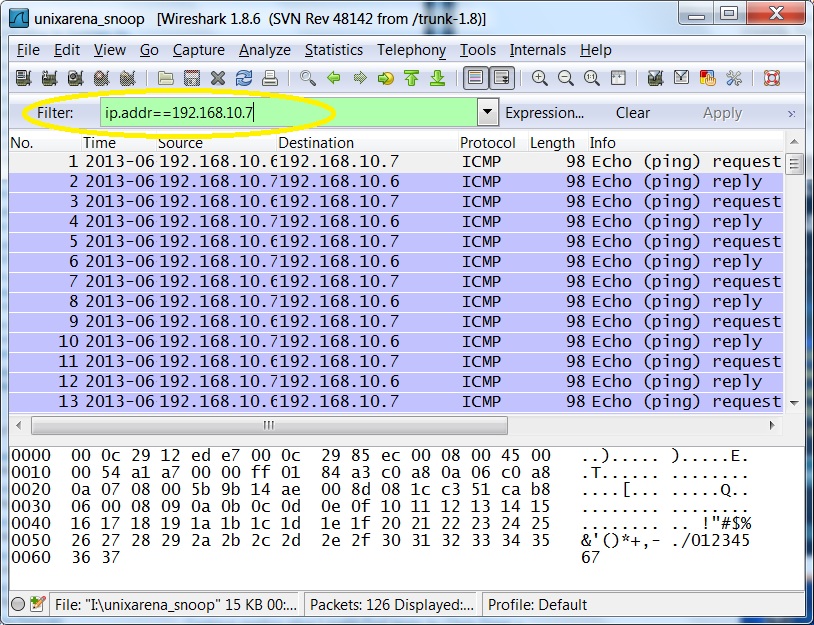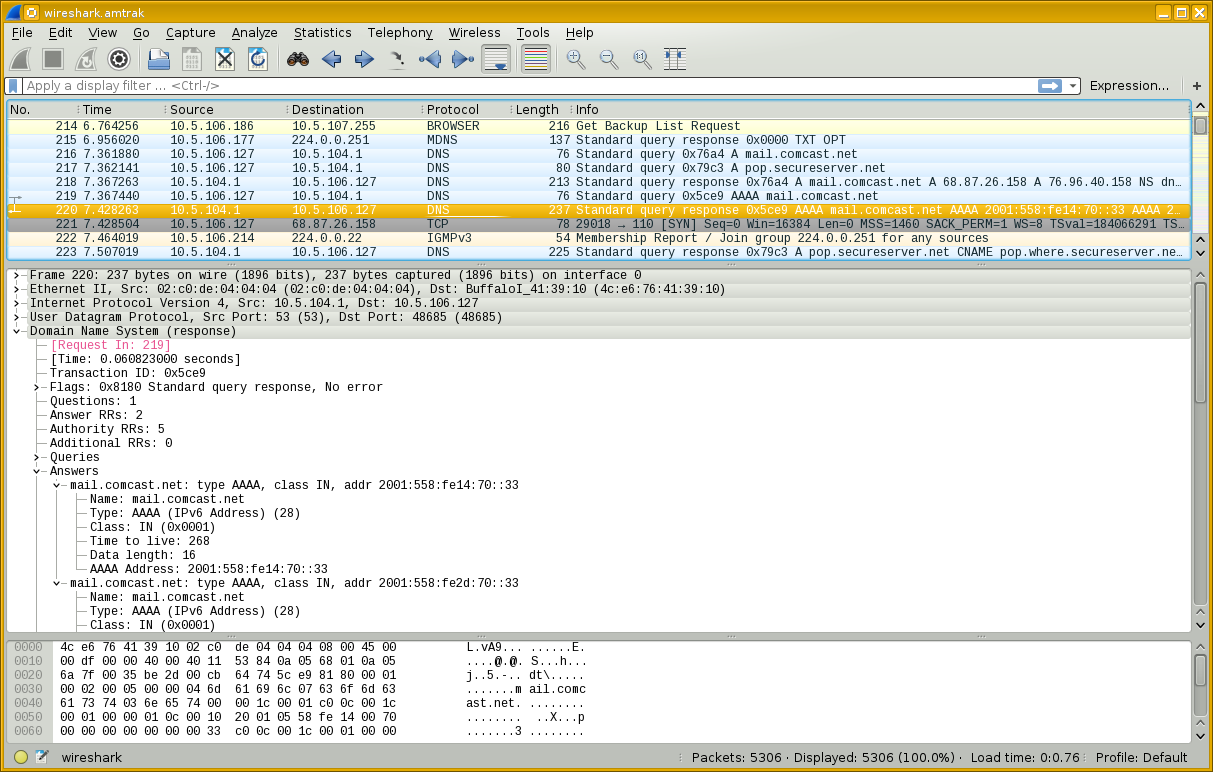

Select the fifth packet, labeled TCP ACK.This is the information passed to the HTTP server with the GET request. Observe the GET request, Host, Connection, User-Agent, Referrer, Accept, and Cookie fields.Expand Hypertext Transfer Protocol to view HTTP details.Also notice that the Ethernet II, Internet Protocol Version 4, and Transmission Control Protocol values are consistent with the TCP connection analyzed in Activity 3. Notice that it is an Ethernet II / Internet Protocol Version 4 / Transmission Control Protocol / Hypertext Transfer Protocol frame. Observe the packet details in the middle Wireshark packet details pane.Select the fourth packet, which is the first HTTP packet and labeled GET /.

Observe the traffic captured in the top Wireshark packet list pane.Note that all of the packets for this connection will have matching MAC addresses, IP addresses, and port numbers.Īctivity 4 - Analyze HTTP Request Traffic Notice that it is a dynamic port selected for this HTTP connection. Expand Transmission Control Protocol to view TCP details.Notice that the destination address is the IP address of the HTTP server. Notice that the source address is your IP address. Expand Internet Protocol Version 4 to view IP details.You can use ipconfig /all and arp -a to confirm. The destination should be your default gateway's MAC address and the source should be your MAC address. Observe the Destination and Source fields.Expand Ethernet II to view Ethernet details.

Notice that it is an Ethernet II / Internet Protocol Version 4 / Transmission Control Protocol frame. The first three packets (TCP SYN, TCP SYN/ACK, TCP ACK) are the TCP three way handshake.

To view all related traffic for this connection, change the filter to ip.addr =, where is the destination address of the HTTP packet.Īctivity 3 - Analyze TCP Connection Traffic.Select the first HTTP packet labeled GET /.To view only HTTP traffic, type http (lower case) in the Filter box and press Enter. Navigate to the website found in your search.Īctivity 2 - Select Destination Traffic.Search the Internet for an http (rather than https) website.These activities will show you how to use Wireshark to capture and analyze Hypertext Transfer Protocol ( HTTP) traffic.Īctivity 1 - Capture HTTP Traffic Wireshark is a free and open source packet analyzer used for network troubleshooting and analysis. 9 Activity 7 - Analyze HTTP Response Traffic.8 Activity 6 - Analyze HTTP Request Traffic.7 Activity 5 - Analyze HTTP Response Traffic.6 Activity 4 - Analyze HTTP Request Traffic.5 Activity 3 - Analyze TCP Connection Traffic.4 Activity 2 - Select Destination Traffic.


 0 kommentar(er)
0 kommentar(er)
